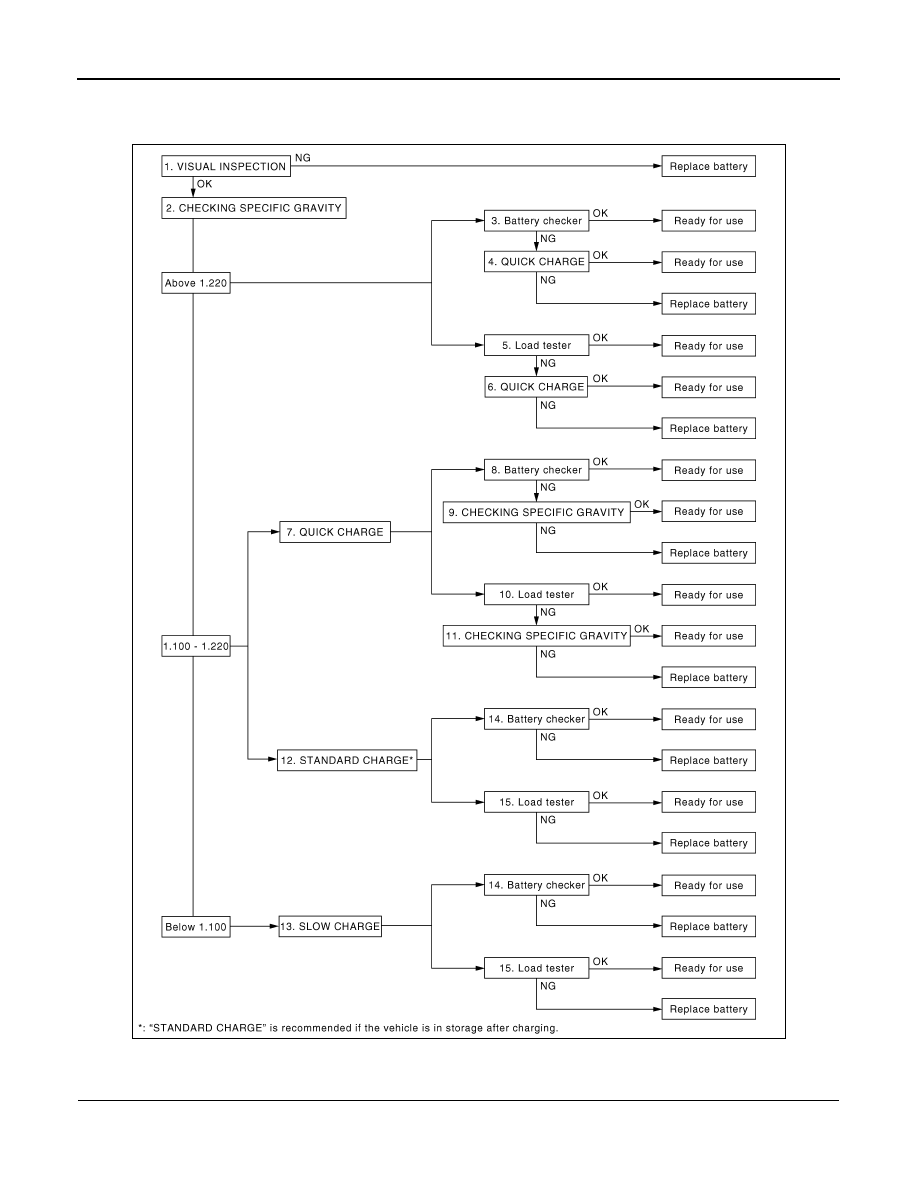Nissan March K13. Manual - part 536

PG-132
< BASIC INSPECTION >
BATTERY INSPECTION
Work Procedure
INFOID:0000000005911875
OVERALL SEQUENCE
DETAILED FLOW
1.
VISUAL INSPECTION
1.
Check battery case for cracks or bends.
2.
Check battery terminals for damage.
JPMIA0184GB